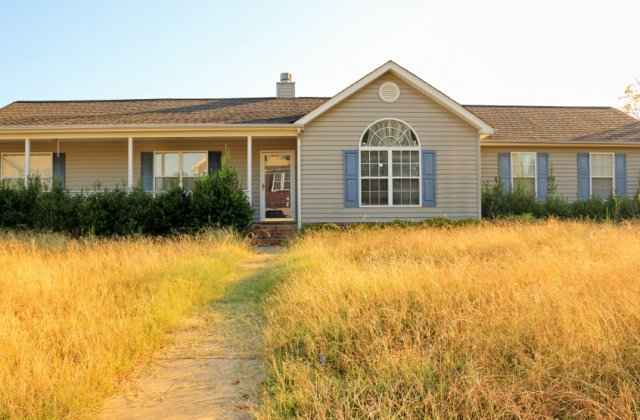
When you're selling your house, you aren't just selling your house. You're also selling your shrubs, your tree with Dutch elm disease and potentially scads of crabgrass. If you suspect your yard is chasing away more potential buyers than it’s drawing in, consider these six landscaping missteps along with suggestions from real estate experts and gardeners to help spruce up your lot.
Your yard looks unkempt. It's important to keep in mind that your yard translates into what the real estate industry calls “curb appeal.” You want potential buyers to like what they see on the outside of the home so they’re drawn inside. You may not have the money to create a Zen garden or plant an oak tree that can support a swing, but you can at least keep your grass mowed and edged properly.
"All beds should have fresh mulch, which is one of the best ways to get bang for your buck in terms of sprucing up your yard," says Bill Golden, an Atlanta-based Realtor who works for Re/Max. "Overgrown shrubs should be trimmed, especially if they block the windows. This will not only help curb appeal but increase light in the home."
He also urges sellers to rake and clear dead leaves periodically rather than letting them accumulate.
"And look up," he says. "When making landscape areas leaf- and debris-free, start at the top. Clean the roof and gutters as needed, and then start on the areas below them."
[Read: 7 Ways to Increase Your Home's Curb Appeal .]
Your yard looks high-maintenance. It sounds crazy, but you can overdo your yard. "Buyers like to see beautiful landscaping, but if it looks like it's too much to take care of, it could be a turnoff," Golden says.
Rich Gloor, owner of Gloor Realty Co. in Oak Park, Illinois, agrees. He says English gardens were a fad for a while, and he was selling homes with front lawns overtaken by rich, beautiful flower gardens.
"It looks great at the beginning of the year when everything's in place, but by [fall], it looks more like a prairie field," Gloor says. Even when the garden is in full bloom, potential buyers may look at it and see a lot of work ahead for them, he adds.
Gloor says elaborate landscaping is less of an issue if the buyer is spending a considerable sum on the home. "If it's a higher-end home, the buyer might not mind writing a check for a landscaping service," he says.
Your koi fish pond may be a turnoff. A water feature can also repel buyers who are looking for a low-maintenance yard. "I think people associate water and ponds with a lot of work," says Scott McAdam, president of McAdam Landscaping in Chicago.
Safety is another reason some buyers won’t be pleased. "A lot of parents are afraid little kids will fall into the pond and drown," McAdam says. "In a lot of communities, it's a requirement to have a fence around a pond, just as you have to have a fence around a swimming pool."
Still, there’s a case for keeping the koi pond, Gloor says. "I had a buyer who recently fell in love with a house that had a koi pond. She hired a service for $60 a month to take care of it. It was a no-brainer for her,” he says. “I really think it depends what stage of life you're in."
[Read: 12 Home Improvements to Boost Your Home's Selling Price .]
Your trees are too close to your house. Sure, those trees might give your home a cozy, wooded vibe, but they also hide your house and block the natural light when you're inside the home, McAdam says. He recommends that trees be planted a minimum of 20 feet from your home to account for growth.
"The landscape should enhance the structure. You don't want large plants concealing your home," McAdam says.
But as a general rule, trees are good for the value of your home. For instance, a study published in February 2010 in the journal Landscape and Urban Planning concluded that homes with trees planted between the sidewalk and street sold for over $7,130 more than houses without those trees.
You aren't taking your real estate agent’s landscaping advice. Since you've been living there forever, you may not notice the broken fence or that your untended flower garden is something of an eyesore. You may not be the best person to judge how your house looks to outsiders.
Gloor says a lot of clients have overgrown evergreen bushes. "They started off as little bushes but now are 10 to 12 feet tall," he says. "They dominate and hide the house."
This is a landscaping issue that's easy to remedy, but "often home sellers won't trim them down," Gloor says. "They'll say, 'Well, the bushes have been like this for 30 years. Why would I cut them down now?'"
[See: 8 Home Remodeling Projects That Are Worth the Money .]
Because a future homebuyer probably won't be as attached to the bushes as you are – that's why.
Really, it comes down to this, McAdam says: "If your lawn is mowed and your flower beds are edged nicely and clean, it's the same effect as seeing a perfectly clean carpet. It shows that somebody cares about the home."
Compare Offers
Compare Offers



Post a Comment